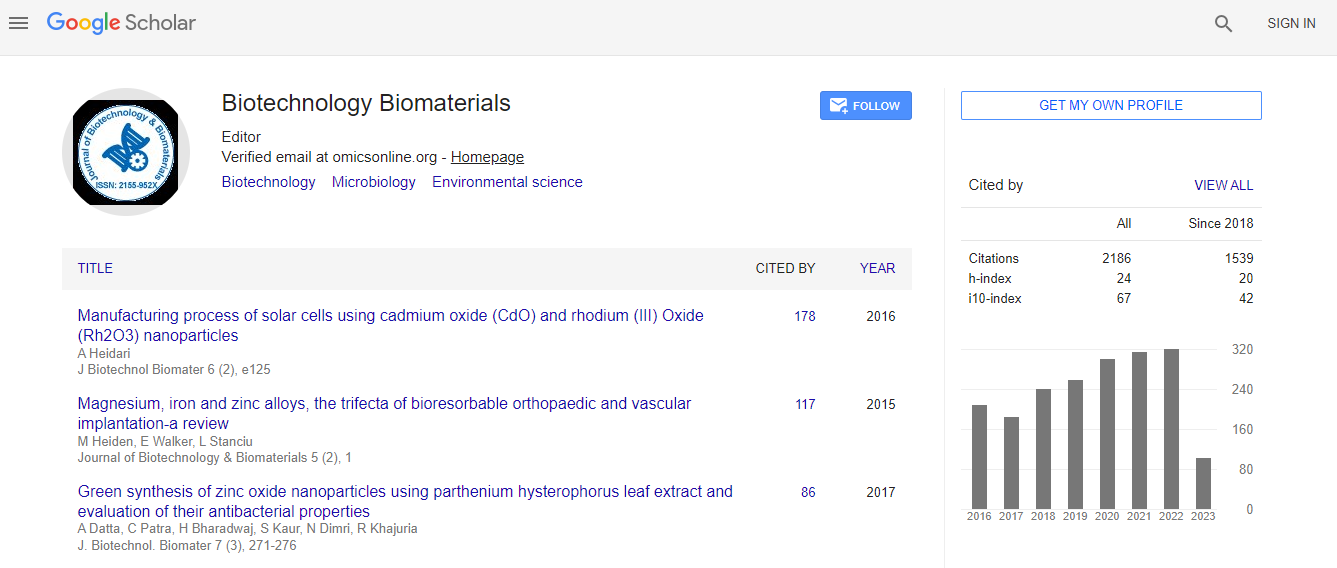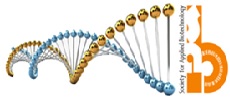Our Group organises 3000+ Global Conferenceseries Events every year across USA, Europe & Asia with support from 1000 more scientific Societies and Publishes 700+ Open Access Journals which contains over 50000 eminent personalities, reputed scientists as editorial board members.
Open Access Journals gaining more Readers and Citations
700 Journals and 15,000,000 Readers Each Journal is getting 25,000+ Readers
Google Scholar citation report
Citations : 3330
Journal of Biotechnology & Biomaterials received 3330 citations as per Google Scholar report
Indexed In
- Index Copernicus
- Google Scholar
- Sherpa Romeo
- Open J Gate
- Genamics JournalSeek
- Academic Keys
- ResearchBible
- China National Knowledge Infrastructure (CNKI)
- Access to Global Online Research in Agriculture (AGORA)
- Electronic Journals Library
- RefSeek
- Hamdard University
- EBSCO A-Z
- OCLC- WorldCat
- SWB online catalog
- Virtual Library of Biology (vifabio)
- Publons
- Geneva Foundation for Medical Education and Research
- Euro Pub
- ICMJE
Useful Links
Recommended Journals
Related Subjects
Share This Page
The probable effect of MT1A (A>G) and MT1A (C>G) SNPs of metallothionein gene on whole blood mercury levels in iranian populations
2nd World Biotechnology Congress
Javad Babaei
Valiasr Hospital Research Center, Iran
ScientificTracks Abstracts: J Biotechnol Biomater
Abstract
Polymorphism in metalloproteins may lead to changes in heavy metal levels in the body. The risk factors of polymorphisms in heavy metal concentrations, particularly mercury, may be due to several confounding factors including differences in ethnicity of the analyzes populations, sample size and the type of the studied environment heavy metals to which population are exposed. We study the effect of MT1A (A>G) and MT1A (C>G) polymorphisms on blood mercury level in Iranian population. 300 non exposure people to control group and 150 exposure people to case group were used. DNA extraction and PCR-RFLP and DNA sequencing was done and blood mercury level was measured via AAS technique by DMA-80. Blood mercury concentration in case group was higher than control group (p value<0.001). There was no significant differences in case and control groups to effect of MT1A (A>G) and MT1A (C>G) polymorphism on blood mercury levels and P value were 0.69 and 0.44, 0.59 and 0.56 for case and control groups, respectively. MT1A (A>G) and MT1A (C>G) polymorphism were not associated with increased level of mercury concentration in Iranian, which needs further investigations. In conclusion, this study suggest that MT1A (A>G) and MT1A (C>G) polymorphisms are not attractive susceptibility markers for high blood mercury concentration.Biography
Javad Babaei has completed his PhD from Jondishapur University and PharmD studies from Mashhad University School of Medicine. He is the Director of Valiasr Hospital Research Center. He has published more than five papers in reputed journals and has been serving as an Editorial Board Member of repute.

 Spanish
Spanish  Chinese
Chinese  Russian
Russian  German
German  French
French  Japanese
Japanese  Portuguese
Portuguese  Hindi
Hindi 
